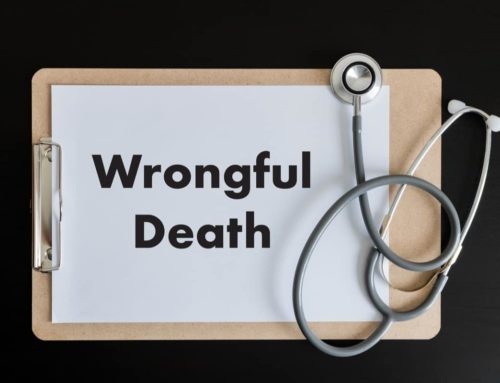Proper medical records are, of course, essential in the process of devising sound personal injury case arguments. However, a combination of large data volume and difficult-to-decipher jargon means those who are not well-versed in the argot and methods of the medical world may only be able to get hints of what lies beneath but never know enough to develop an accurate picture of events. These two problems – large size and limited accessibility – are what medical chronologies and summaries are designed to solve.
What is a Medical Chronology?
For our purposes, a medical chronology is a written document that lists medical events relevant to a particular personal injury case in chronological order. These documents contain information such as date and time of visit, healthcare provider, category of service and outcome of medical event, and may include page number and hyperlink of referenced information. Medical chronologies generally eschew medical and legal jargon and shorthand to ensure that their contents can be easily understood by lay audiences. To be effective, these documents should be succinct, list all relevant facts without bias and offer insight into a case.
What is a Medical Summary?
A medical summary includes the aforementioned chronology and a comprehensive summary of each event listed therein. A typical summary includes such information as medical condition of the client in question, details of the medical personnel they contacted, tests conducted, diagnoses, nature of current treatment plan, medication and dosage. Medical summaries can also include major surgeries and details of equipment such as pacemakers and hearing aids.
There are two types of summaries, brief and detailed. A brief summary is usually about one to two pages long and provides a condensed overview of the most important issues and events concerning a case. Detailed summaries, on the other hand, are typically two to 10 pages long and provide a more comprehensive outline of events in a chronological order.
What Role Do These Documents Play in an Attorney’s Case Lifecycle?
Attorneys use medical chronologies at settlement conferences to buttress their arguments and prove that facts favor their case, which can nudge the opposing counsel-and-client team to settle rather than proceed to trial. However, if the case does end up in court, medical chronologies can assist an attorney to educate a jury when making an opening statement and emphasize relevant points during closing. Chronologies are also used in preparation of pre-trial motions and motions for summary judgment.
The succinct, easy-to-digest nature of brief summaries makes them ideal for initial pre-litigation reviews. Attorneys also use them for reference in situations where they are likely to turn down a case. However, where there is a likelihood that they will accept a case, or when they are conducting an initial evaluation for a case that is already in litigation, attorneys turn to detailed summaries.
In general, attorneys use medical summaries to prepare and present exhibits, show the extent and effects of an injury, respond to cross-questioning by a prosecutor or judge, and during questioning for a deposition. Perhaps most importantly, they use these documents to create a convincing, non-contestable compensation demand.
What Role Do These Documents Play in Personal Injury Cases?
Medical chronologies provide a timeline of events relating to a case, making it easier to build a convincing argument, whether that is for or against compensation. In addition, offloading the burden of recall to these documents allows attorneys to focus on other aspects of the case in question. Medical chronologies also bring clarity, allowing all parties involved in a case to identify what happened at particular points in time, which can help bring about a speedier resolution.
Medical summaries provide attorneys with the means to understand the medical terms and procedures relevant to a particular case. Perhaps more importantly, they allow attorneys to focus on a case without the risk of getting bogged down by the numerous details that inevitably accompany such proceedings. Medical summaries also act like a guide; for instance, if an attorney needs to consult an expert, a summary can provide guidance on what type of expert is needed. They can also help legal firms determine if there are information gaps, and shed light where the opposing party makes a counterclaim.
How Are These Documents Prepared?
The first step in the process involves determining which medical records are required for a case. This determination is carried out after paralegals identify which healthcare providers the client in question has visited. To get this information, the plaintiff law firm interviews the client, while the defense firm reviews responses to the interrogatories in the case. This process can go on for some time depending on the nature of the case.
Once the plaintiff firm identifies which providers the client visited, it requests or subpoenas them for relevant medical records. For certain types of records, such as those for minors or the mentally challenged, the firm has to provide proof of client consent before care providers can release them. After obtaining the records, the firm gives each page an identification number for easy marking and exhibition during the discovery stage and, if the case goes to court, trial preparation. In the legal field, the most popular system for this purpose is the Bates numbering system, which is also known as the Bates Stamping or Bates Coding system.
The next step is assessment. Paralegals review records for issues of concern that could negatively impact the case. These include inadequate or missing records, documentation errors, tampering and so on. Where necessary, they obtain the information needed to correct these oversights. With this accomplished, paralegals interview case attorneys and review complaint documents to determine what information is needed and how the chronologies and summaries should be formatted to maximize clarity.
No matter how they are formatted, these documents generally include the name of healthcare care provider, date and time of service and care, facts relating to the case, paralegal comments, the Bates number and, in some cases, hyperlinks to the medical record from which the information was derived.
Medical chronologies and summaries are prepared using software. While general-purpose software such as Microsoft Office will do in a pinch, specialized, legal-centric software such as LiveNote Stream by Thomson Reuters Legal, CaseMap by LexisNexis, Summation by AccessData and Stedman’s Legal Med Ware may provide a better experience.
What Kind of Challenges Do Legal Firms Face When Preparing These Documents?
Legal firms typically start the process of preparing medical chronologies and summaries by interviewing clients in order to get the preliminary information they need to determine what medical records a particular case requires. If there are gaps in the interviewee’s testimony, perhaps due to forgetfulness or other reasons, the quality and reliability of medical chronologies and summaries can suffer. In such cases, legal firms typically require clients to come for several interviews. Attorneys may turn down a case if they suspect that the gaps are the result of duplicity.
Determining which medical records are relevant to a case can sometimes be a challenge, particularly when the volume is large. In such situations, legal firms may hire legal nurse consultations, professionals who are well-versed with both medical and legal procedures, or outsource the work to specialist firms.
In certain situations – where records have been misplaced, lost, corrupted, or tampered with, for example – law firms may be unable to get the information they need. Determining how to present information so that it is illuminating without being confusing can also be a problem.
What Are the Best Practices When Preparing These Documents?
Interviewers should keep a record of everything a prospective client says – even what seems irrelevant or of little consequence – practically from the moment they meet. This eliminates the risk of forgetting something important. Legal firms should also ensure that they have complete records. It is advisable to obtain signed certifications from each healthcare provider to avoid disputes later. All information should be included in a chronology or summary during the initial stages of preparation; if necessary, reviews can be conducted later to cull facts that are not relevant to the case in question. Facts should be clearly marked as disputed or undisputed if a chronology or summary includes a mix of both. Finally, every individual or organization should be referred to using a single name or alias to prevent the confusion that can arise when several name permutations are used for one entity.
Closing Thoughts
Medical chronologies and summaries are invaluable in personal injury cases. They literally help win cases. Without them, attorneys would get bogged down in a thicket of voluminous medical records and hard-to-understand technical jargon. Unlike Aaron Levenstein’s statistics, these documents are revelatory, not suggestive.
You can contact the legal team at Allan Berger & Associates for a free case review to determine if you have an actionable personal injury case. You can reach our office by calling (504) 618-1596 or sending us a message via our contact form.








